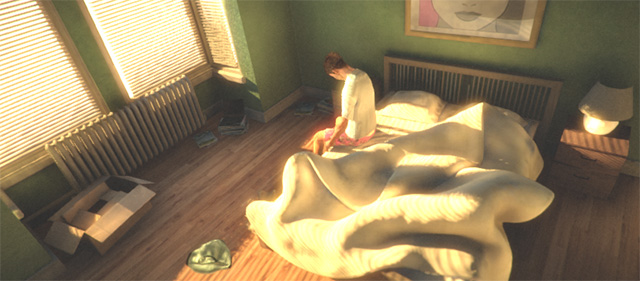- Unity User Manual (2019.1)
- グラフィックス
- グラフィックスの概要
- 高度なレンダリング機能
- Unity で HDR レンダリング
Unity で HDR レンダリング
通常のレンダリングでは、ピクセルの赤、緑、青は 0 から 1 の範囲の小数点数により表現され、0 は強度 0 であり、1 はディスプレイデバイスの最大の強度を意味します。これを使用するのは簡単ですが、現実世界の場面でのライティングの働きを正確に反映しません。人間の目は、近隣のライティング条件に合わせようとするため、もし暗く照らされた部屋で白く見えるものでも、昼間の明るい光で灰色に見えるものほどに実際は明るくない場面があります。さらに目はレンジの低いほうが高い方よりも明るさの差に敏感です。
ピクセル値の範囲が現実世界のライトレベルをより正確に反映するようにレンダリングを適合させると、より説得力のあるビジュアルエフェクトを得られるようになります。値をディスプレイデバイスで利用可能な範囲にマッピングしなおす必要はありますが、中間的な演算( Unity のイメージエフェクトのような)では、よりリアルな結果が得られるようになります。グラフィックスの内部表現で 0 ~ 1 範囲外の値を使えるようにすることは High Dynamic Range (HDR) レンダリングの根本的な要素です。
HDR での作業
HDR はカメラコンポーネントの設定を使用して各カメラで別々に有効化します。
When HDR is active, the scene is rendered into an HDR image buffer which can accommodate pixel values outside the 0..1 range. This buffer is then used by post-processing effects such as the Bloom effect in the Post-processing stack. The HDR image is then converted into the standard low dynamic range (LDR) image to be sent for display. This is usually done via Tonemapping, part of the Color Grading pipeline. The conversion to LDR must be applied at some point in the post-process pipeline but it need not be the final step if LDR-only post-processing effects are to be applied afterwards. For convenience, some post-processing effects can automatically convert to LDR after applying an HDR effect (see Scripting below).
トーンマッピング
Tonemapping is the process of mapping HDR values back into the LDR range. There are many different techniques, and what is good for one project may not be the best for another. A variety of tonemapping techniques have been included in the Post-processing stack. To use them you can download the Post-processing stack from the Asset Store. A detailed description of the tonemapping types can be found in the Color Grading documentation.


HDR の長所
- カラーが高い強度のエリアで失われない
- ブルームおよびグローの優れたサポート
- 低い周波数のエリアでのバンディングの削減
HDR の短所
- 浮動小数点数レンダーテクスチャを使用しています (レンダリングが遅くなり、より多くの VRAM を必要とします)。
- ハードウェアのアンチエイリアスサポートがありません (ただし、アンチエイリアシングポストプロセシングエフェクト を利用してエッジを滑らかにすることができます)。
- すべてのハードウェアでサポートされているわけではありません。
使用するうえでの注意
フォワードレンダリング
フォワードレンダリングモードでは、HDR はポストプロセシングエフェクトが有効である場合にのみサポートされます。これはパフォーマンス上の理由によるものです。ポストプロセシングエフェクトが行われない場合、トーンマッピングは存在せず強度の切り捨てが発生します。このような状況では、シーンは HDR がサポートされていないバックバッファーに直接レンダリングされます。
デファードレンダリング
HDR モードでは、ライティングバッファーも浮動小数点バッファーとして割り当てられます。 これにより、、ライティングバッファー内の縞模様が減少します。ポストプロセシングエフェクトが行われない場合でも、HDR はデファードレンダリングでサポートされます。
スクリプト
The ImageEffectTransformsToLDR attribute can be added to a post-processing effect script to indicate that the target buffer should be in LDR instead of HDR. Essentially, this means that a script can automatically convert to LDR after applying its HDR post-processing effect. See Writing Custom Effects in the Post Processing package for more details.